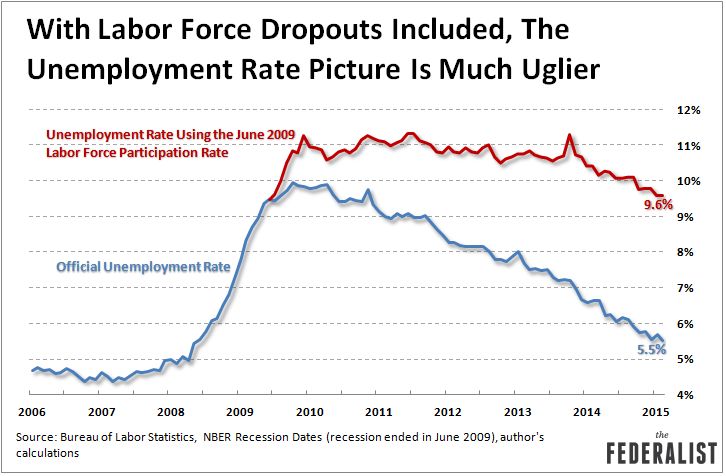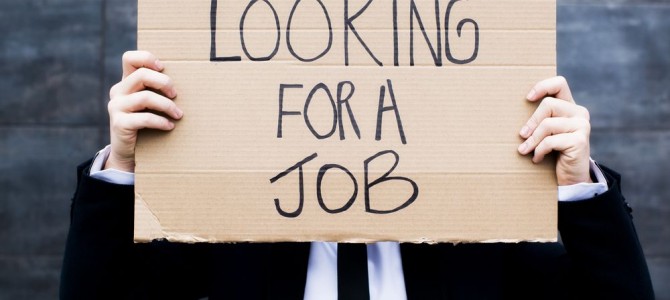The Department of Labor announced today that the official unemployment rate fell to 5.5 percent last month, the lowest it’s been since Spring of 2008. Good news, right? Well, kind of. The official unemployment rate masks a problem that’s been plaguing the economy since shortly before the 2009 recession: a continuing decline in the labor force participation rate, which basically measures the percentage of the able-bodied population that’s either working or looking for work. After holding steady at roughly 66 percent from 2004 through late 2008, the labor force participation has been falling, and falling, and falling some more, with no end in sight.
This decline has significant effects on the official unemployment rate. People who are unemployed and eventually stop looking for work are no longer counted as being part of the labor force, which means they’re no longer counted by U.S. statistical agencies as being unemployed (you can read in detail about the math underlying this dynamic here). The result? An artificially low official unemployment rate.

So what does the unemployment rate picture look like if you take into account all of the labor force droputs since the end of the recession in June of 2009? Not pretty. If you take those labor force dropouts into account, the U.S. does not have an unemployment rate of 5.5 percent. Instead, it has a likely unemployment rate of 9.6 percent, and that’s hardly good news.









